Prominent People
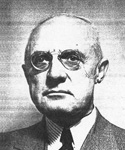
G. H. Ling (1874 - 1942)
George Herbert Ling was born in Wallacetown, Ontario, in 1874. He obtained B.A. (Toronto), Ph.D. (Columbia), and ad eundem (Saskatchewan) degrees. He was the lone professor of the math department from 1910-1915. During this time he also took on secretarial duties. Ling was Dean of the College of Arts & Science from 1912-1939, director of summer school from 1919-1937, and remained with the mathematics department until 1939.
He helped make the summer school one of the best in Canada. Ling taught in summer sessions at Columbia, Cincinnati, New York, and California. He served as a Chairman of the Saskatchewan Educational Council, and was a member of many academic societies American Mathematical Society, Mathematical Association of America, American Association for the Advancement of Science. George co-wrote a book on projective geometry, and contributed to scholastic journals. Well respected and much loved by students and associates, Ling believed that the Faculty of Arts & Science was the root of any university, and strived to strengthen these roots. Ling died in a Toronto hospital, October 21st, 1942.
 Lloyd L. Dines (1885 - 1964)
Lloyd L. Dines (1885 - 1964)
Lloyd L. Dines was born in Shelbyville, Missouri, March 29, 1885. He received his B.A., M.A. (Northwestern) and Ph.D. (Chicago) degrees. His thesis was directed under Professor Bliss and was titled, ‘the highest common factor of a system of polynomials in one variable'. Dines first taught at Columbia, Arizona. He moved to the U of S, where he taught from 1915-1934 as junior dean, professor, and assistant professor.
He was elected to the Royal Society of Canada in 1928. After leaving the department, he became head at the Carnegie Institute of Technology until 1945, when he retired. Upon retirement, he became visiting professor at U of S, Smith, and Northwestern. The main focus of Dines' research work was on linear inequalities. He was one of the pioneers in this area. Dines was viewed as an excellent teacher and compassionate individual. He died in Quincy, Illinois, January 17, 1964.
 Alfred J. Pyke
Alfred J. Pyke
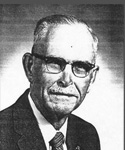 Herman H. Ferns (1894 - 1976)
Herman H. Ferns (1894 - 1976)
D.B. Delury (1907 - 1993)
Daniel B. Delury received his B.A. (1929), M.A. (1930), and Ph.D. (1936) degrees from the University of Toronto. He was with the University of Saskatchewan's math department as an instructor from 1932-1935. After this he returned to teach at the U of T. In 1954, DeLury won the ASQ Brumbaugh Award for ‘the published paper deemed to have the greatest contribution to the development of industrial application of quality control'. DeLury won the Honorary member award of the Statistical Society of Canada (1980). The Daniel B. Delury Teaching Award for ‘outstanding performance as a teaching assistant' was created at the U of T in his honour. Delury died in 1993.
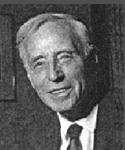 Ralph Jeffery (1889 - 1975)
Ralph Jeffery (1889 - 1975)
Ralph Lent Jeffery was born October 3rd, 1889 in Overton, Nova Scotia. Working as a fisherman and with only a eighth grade level of education, at the age of 21, he went back to school. He became principal of a secondary school and then went to Acadia University, where he majored in economics and took a few math courses. However, Jeffery's graduate studies were in mathematics, which he studied at Cornell and Harvard. He was head of the Department of Mathematics at Acadia University from 1924-1942,
except to complete his Ph.D. at Cornell in 1928, and in 1939 to become acting head and professor at the University of Saskatchewan. Jeffery was elected to the Royal Society of Canada in 1937. He went on to become head of the Department of Mathematics at Queen's University (1942-1960). At Queen's, he was extensively involved with research and was Chair of the Board of Graduate Studies. After his retirement, Queen's named a building after him (Jeffery Hall). Jeffery returned to Acadia after retirement to continue teaching.
At the time of his death, at the age of 85, he was still teaching three courses. Jeffery was organizer and Director of the Summer Research Institute of the Canadian Mathematical Society from 1950-1965, and was the fourth President of the CMS, from 1957-1961. In 1968, the CMS created the Jeffery-Williams Prize, to recognize outstanding contributions to mathematical research. Jeffery's received honorary degrees from Acadia, Dalhousie, St.Mary's, Memorial, McMaster, Windsor and Queen's universities.
R.D. James (1909 - 1979)
Ralph Duncan James was born in Liverpool, England but moved to Vancouver while still in his youth. James received his B.A. from the University of British Columbia in 1928, his Ph.D. from Chicago in 1932, and was awarded an NRC Postdoctoral Fellowship. James spent a year at Cal Tech where he worked with E.T. Bell and a year at Cambridge with G.H. Hardy. He then taught at the University of California at Berkeley (1934-1939).
In 1940 James returned to Canada and became head of the University of Saskatchewan until 1945. He was elected to the Royal Society of Canada that year, and joined UBC as a professor. James was department head at UBC for twenty-five years, until his retirement in 1974. Ralph was the fifth President of the CMS, from 1961-1963. He spent much of his time traveling to universities/colleges and promoting mathematics. In the 1950s, he helped revise the provincial curriculum for high school math, and was made B.C.A.M.T. honorary president. In the 1960s, his attention turned to the applications of mathematics in biology and social science. James helped to form the Institute of Applied Mathematics and Statistics at UBC. The CMS honored James in 1978 by creating the Coxeter-James Prize' to recognize young mathematicians who have made outstanding contributions to mathematical research'. James died in 1979.
Douglas Derry (1904 - 2001)
Douglas Derry was elected to the London Mathematical Society in 1938. He worked at the U of S from 1940-1947, as an instructor and assistant professor. He is best known for his papers on group theory and polygons. Derry died in 2001 at the age of 97.
David C. Murdoch
David Murdoch was with the department from 1941-1945, as an instructor and assistant professor. He is best known as the writer of the book, Linear algebra for undergraduates, which is still used today.
 Max Wyman (1916 - 1991)
Max Wyman (1916 - 1991)
Max Wyman was born in Lethbridge in 1916. A gifted individual, he entered university at the age of 16 and persuaded the university to let him take second year calculus. He received his B.Sc. (Alberta) in 1937, and won the Governor General's Gold Medal. Wyman then obtained his Ph.D. from the California Institute of Technology. While at Caltech, his teachers included Robert Oppenheimer, Enrico Fermi, Paul Dirac, and Wolfgang Pauli. He also was in close relation with a handful of Nobel Prize winners. From 1940-42, Wyman worked for the National Research Council in Ottawa, in a wartime arrangement. Wyman was an instructor at the University of Saskatchewan in 1942/43. When he was elected to the Royal Society of Canada in 1951, he was at the time the youngest person ever to do so. The following year he became a lecturer at the University of Alberta. There, he became a full professor (1956), Chair of the Department of Mathematics (1961), Dean of Science (1963), Vice-president (1964), and President of the University (1969-1974). Wyman served on commissions for the courts, human rights, and electoral boundaries. Wyman was also the sixth President of the CMS, from 1963-1965, and winner of the Jeffery-Williams lecture in 1976. The University of Alberta holds in it's archives a letter that Wyman wrote to Albert Einstein in 1945, in which Wyman points out an error made by Einstein. He went on to solve equations underlying unified field theory, which in effect ended Einstein's new theory of merging his gravity with Maxwell's electromagnetism. Wyman was quite an intellect to be able to understand work at this level. He earned a reputation and his name drew Werner Israel - a young South African, who would later become an expert on black holes and work with Stephen Hawking - to join the university as a professor in the 1950s. Wyman died in 1991 after a life of many accomplishments.
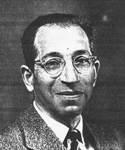 Peter Scherk (1910 - 1985)
Peter Scherk (1910 - 1985)
Peter Scherk was born September 2, 1910 in Berlin, Germany. He attended the Universities of Göttingen and Berlin, getting his Ph.D. in Göttingen (1935) under the supervision of Professors Herglotz and Fenchel. He became personal research assistant to E. Landau. In a 1936 joint paper with Landau and Heilbronn, he gave a partial solution of the famous ‘Goldbach conjecture', which states that every number is a sum of three primes Due to Nazi expelsion of Jews from Germany, he moved to Prague where he worked as a tutor and was a honorary visiting fellow at the German University in Prague. In 1939, he moved to New York, where he lived with an uncle.
Scherk became an honorary research fellow at Yale in 1940, and a teaching assistant at Indiana University from 1941-43. These first few years in North America provided irregular and low paying opportunities for Scherk. This ended in 1943 when he was offered employment as an instructor at the U of S. Scherk was elected to the Royal Society of Canada in 1952 and promoted to professor in 1955. He was with the department from 1943-1959, during which time he was visiting professor at the University of Pennyslvania
for one year. After his stay here, he moved to the University of Toronto as a professor from 1959-1976, after which he retired. He continued however to teach part-time for several more years. Scherk's main research was on differential geometry, but he also researched algebra and number theory. He published over sixty research papers, and supervised the doctoral theses of four students. He put even greater effort into his research after retirement and was in the midst of three papers when he died. Scherk came from a mathematical family. His great-uncle H.F. Scherk (for which a surface was named), and son John were also mathematicians. Scherk had a considerable impact on the research level in Canada. He was editor-in-chief of Canada's first mathematical research journal, the Canadian Journal of Mathematics, and established a second journal, the Canadian Mathematical Bulletin, for which he was also editor. Scherk died June 6, 1985.
 C.E. Miller
C.E. Miller
Carmen E. Miller was born in Milliken, Ontario. He received his B.A. (1930), M.A. (1931), Ph.D. (1940) degrees from Toronto. He attended Göttingen University, Germany in 1931/32 on a Gertrude Davis Exchange Scholarship. In 1934-35 he went to the Ontario College of Education. Miller was a high school teacher and teaching fellow at the University of Toronto, followed by the University of New Brunswick (1941-46). At New Brunswick, he became professor and head, and commanded the university Air Squadron (1942-44).
Carmen joined the U of S mathematics department in 1947. He became head in 1964 and stayed on until 1973. Miller was honorary president of the Saskatchewan Mathematics Teachers Society, secretary-treasurer of the faculty club (1958-60) and president (1962-63). He was president of Saskatoon Branches of the Canadian Institute of International Affairs, and the Humanities Association of Canada (1956-57).
Norm Shklov
Norm Shklov got his B.A. from the University of Manitoba (1940), his M.A. from the University of Toronto (1949) and did his Ph.D. work at the University of Indiana. He was an instructor at Indiana before joining the U of S as a special lecturer in 1952. He stayed with the department until 1967 as an assistant and then associate professor. Shklov also had employment with the Defense Research Board, the Dominion Bureau of Statistics and the Department of Labour - Annunities branch. Skhlov suggested in 1959, inviting the top seventy-six high school students in the province, to come to the university for two days of touring and academic competition, something that Indiana had long done.
Norm was chairman of the University's Computation Centre, and brought computers to the university. In 1960, the Sask. and National Research Councils, and the U of S (under supervision of the math dept) purchased a LGP 30 computer. In 1963 the university upgraded to renting a IBM 1620, model 2, valued at $222, 800. 1966 brought the addition of the IBM 1230 optical mark scoring reader marker, a primitive ‘Scantron',
which aided in the development of a province-wide testing center. Shklov was best known as a statistician, and for his work on pension plans. In 1963, he and Professor Fern wrote ‘Mathematics of Canadian Finance', a book which he contributed three chapters on electronic computation. In 1967 he left to become a professor at the University of Windsor.
G.H.M. Thomas
Garth Thomas obtained his B.Sc. (Manitoba), M.Sc. and Ph.D. (Wisconsin) degrees. He holds the record for longest stay with the department at forty-one years (although the record is under serious attack by a current faculty member). Thomas started out as an instructor with the department in 1953. By 1956 he was an assistant professor, in 1962 he was made an associate professor, in 1968 he became a full professor and in 1970 he became department head. He remained head for a full decade and stayed on with the department until his retirement in 1994. Thomas was among the founding members of the Saskatchewan Mathematics Teachers Society. He started Saskatchewan Mathematics Contests, served on and was chairman of the Canadian Mathematics Olympiad, and also was on numerous provincial curriculum advisory committees of the Department of Education.
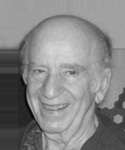 W.O.J. Moser
W.O.J. Moser
William Moser received his B.Sc. (Manitoba, 1949), M.A. (Minnesota, 1951), and Ph.D. (Toronto, 1957). He was at the University of Saskatchewan 1955-1959 as an instructor and assistant professor. After 5 years at Univ. of Manitoba, he went on to become a professor at McGill University until his retirement in 1997. His research areas are finite groups, combinatorics, and discrete geometry. The book "Generators and Relations
for Discrete Groups" (Springer, 1957) that he coauthoured with his Ph.D. supervisor H.S.M. Coxeter is still the authoritative reference on the subject today. Moser, J.Pach and P. Brass recently published "Research Problems in Discrete Geometry" (Springer, 2005, 500 pp.; see website: www.math.mcgill.ca/moser). Moser was president of the CMS (1975-1977); the Society awarded him The Distinguished Service Award in 2003 (http://www.math.ca/Prizes/citations/ds2003.pdf).
William Moser passed away, January 28, 2009. Please see tribute to him at The Canadian Mathematical Society Web site:
"http://www.cms.math.ca/bulletins/2009/william-moser" CMS Tribute to William O.J. Moser
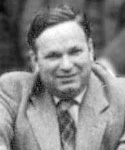 Andre-Paul Guinand (1912 - 1987)
Andre-Paul Guinand (1912 - 1987)
A.P. Guinand was born in Renmark, South Australia. He went through life with his education paid for by scholarships. Guinand graduated with a B.Sc. with first class honors from the University of Adelaide (1933) and a Ph.D. from Oxford (1937). One of the supervisor's of his thesis was Hardy.
Guinand is a worldly scholar attending Göttingen, Germany in 1937-38 and Princeton, USA in 1939-40. He served in the RCAF from 1940-45, as a navigator and navigation instructor in Canada until 1943 and then in operational research and experimental navigation in England, eventually making squadron leader. He worked from 1947-1956 at the Royal Military College of Science, Shrivenham, England as a lecturer, then as an associate professor. Guinard was department head at the University of New England, Armidale, N.S.W., Australia, and then the University of Alberta (1957-1960). Guinand was with the U of S from 1960-1964 and was department head from 1962-64. In June 1964 he resigned to take a position at Trent University in Peterborough, Ontario.
S. Kinoshita (1925 - present)
Shin'ichi Kinoshita was born in Japan in 1925 and is best known for his brilliant research work in topology and knot theory. He was a student of another great mathematician, Hidetaka Terasaka, at Osaka University. The first problems that Kinoshita studied were the ‘fixed point property' followed by topological transforms and 3-dimensional topology. After this, Kinoshita was interested in knot theory, but no information on the subject was available in Japan. Following correspondence (1955) with Professor R.H.Fox at Princeton University, Terasaka and Kinoshita began their work on knot theory. They produced a number of papers and conjectures on the subject and were the first to do so in Japan. During this time, topology and its methods were being globalized, as Fox and other American topologists would visit Japan, and Kinoshita and other Japanese topologists would visit Princeton. As a result, advancement in this emerging field was made at a brisk pace. Kinoshita received his Ph.D. in 1958 and was a Lecturer the same year at Osaka. In 1959 Kinoshita moved to Princeton where he worked with Professor Fox from 1959-1962. From 1963-1965 he was an assistant professor at the University of Saskatchewan. After this, Kinoshita taught at Florida State University until his retirement in 1984. He then moved back to Japan, and became a professor of Kwansei Gakuin University, until his second retirement in 1994. He is currently living with his family in Atlanta.
T.P. Pepper
T.P. Pepper was with the department from 1965-66 as a sessional lecturer. He served as director of the Saskatchewan Research Council.
Bikkar S. Lalli
Bikkar Lalli was a graduate of Punjab University and the UBC. Lalli was a lecturer at Punjab before joining the U of S as an assistant professor in 1966. He became an associate professor in 1968, professor in 1975, and was department head from 1977-1979. Lalli was a speaker at a number of places including Berlin and Athens. He also chaired a session on the topic of ‘Analysis' at the World Congress of Mathematicians in 1974 at Vancouver. Lalli has published 155 documents to date.
 R.V. Moody (1941 - present)
R.V. Moody (1941 - present)
Robert Vaughn Moody was born November 28, 1941 in Great Britain. He received his B.A. (with Great Distinction) from the University of Saskatchewan (1962), and his M.A. and Ph.D. from the University of Toronto (1964, 1966). Moody then returned to the U of S in 1966 where he worked his way from an assistant professor to full professor (1977), and head of the department (1989-90). From 1990 to the present, he has been a full professor at the University of Alberta. Moody has had guest professorships at New Mexico State University (1967-68), Mathematisches Institüt, Universität Bonn
(1973-74), Gesamthochschule Wuppertal, and Université de Paris VI (1979), Centre de Recherche de Mathematiques Appliquées, Montréal (1983/84), Concordia University, Montreal (1984-1986), Tata Institute for Mathematics, Bombay Autumn (1987) and has been a member of the Aspen Institute for Physics various years.
To date, he has - or is in the midst of - supervised twenty-three theses, has seventy-two published articles and six books to his credit. Robert has had numerous awards bestowed upon him. He is a member of the Royal Society of Canada (1980), and has received the Coxeter-James (1978) and Jeffrey-William (1995) Lectureships from the CMS, as well as several other lectureships. He is a fellow of the Japan Society of the Promotion of Science (1981), winner of the Eugene Widger Medal (1994-96) for the discovery of Kac-Moody algebras, CRM/Fields Institute Prize (1998), and an Officer of the Order of Canada (1999).
Moody's research work is concentrated on symmetries and lie theory. Moody notes extra involvement in the study of vertex operator representations which appear in the theory of solitons, string theory, etc. Recently, Moody has been interested in a periodic order as manifested in quasicrystals, the mathematics of which, are quite interdisciplinary.
In April 2002, Moody was awarded the Killam Prize, valued at $100,000. for career achievement in the natural sciences.